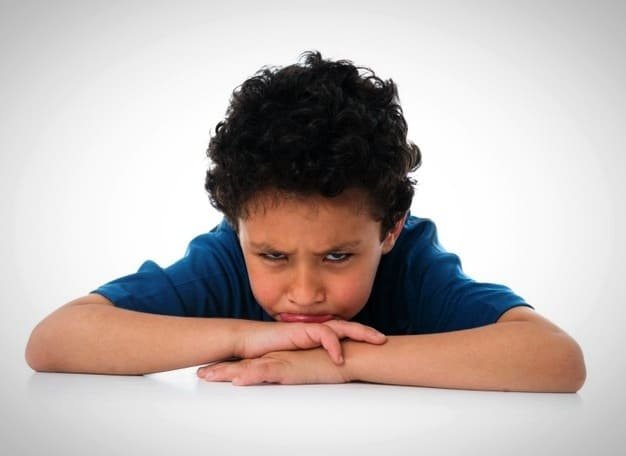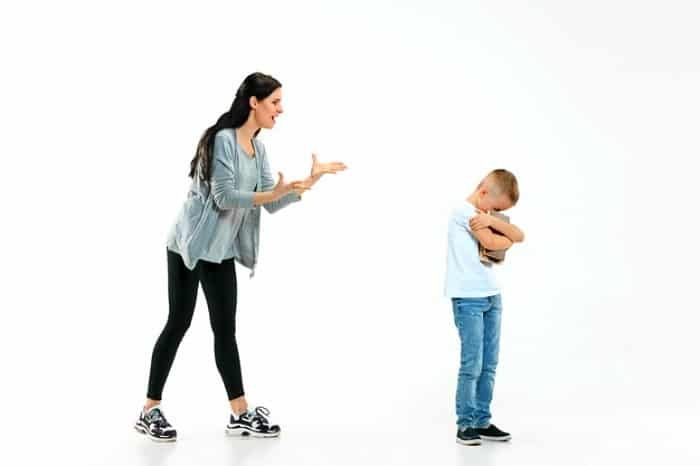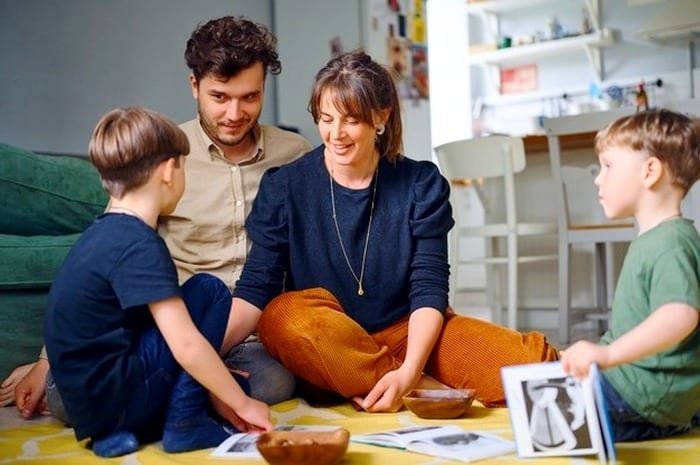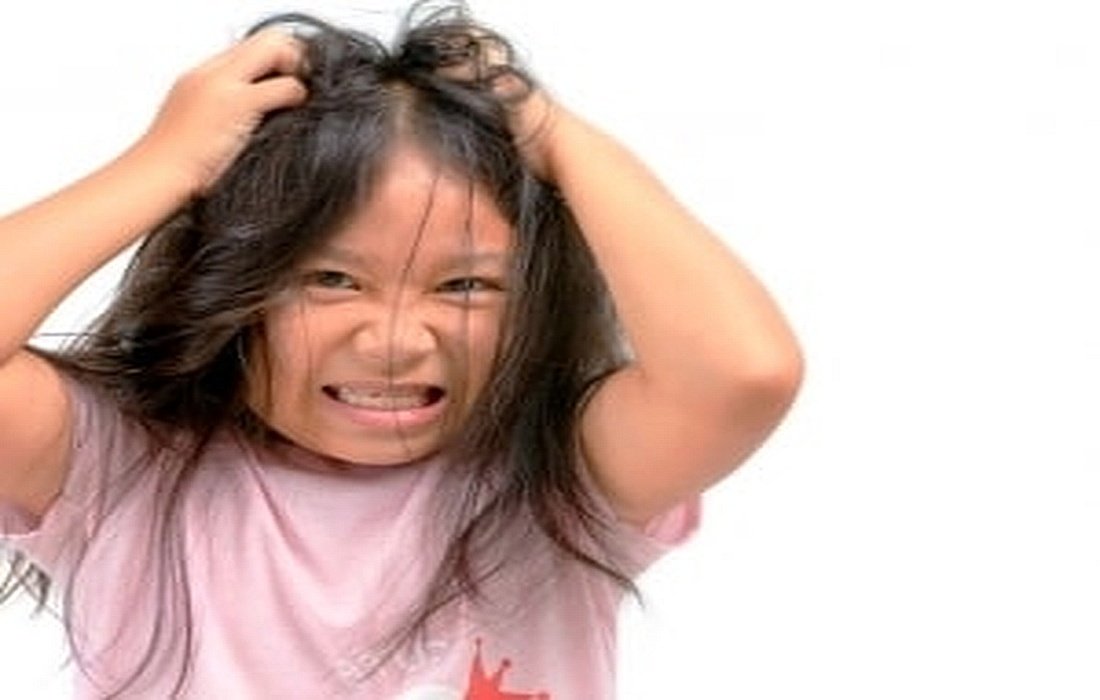Golden Tips forControlling AngerChildren
Anger is a natural emotion that everyone experiences in life, but what is very important is managing and controlling that anger.
Getting angry can not only cause psychological damage to children but can also affect their physical health. Therefore, children need to learn useful techniques for anger management from the earliest stages of their upbringing.
As parents, you can teach them how to control themselves in such situations, preventing their anger andfrustrationfrom escalating as they grow. Stay with us until the end of this section from Family PlusSelMagzto become familiar with techniques for managing children’s anger.

The inability to control emotions is a cause of children’s anger.
Aggressive behavior is a part of the developmental stages of toddlers; at this age, children are improving their speech and have a strong desire for independence but lack full control over their emotions, including the impulse of anger. In situations like fatigue, frustration, disappointment, or even hunger and thirst, they may react physically and disobey.
Additionally, children cannot properly understand their surroundings, and with strong emotions, they lack sufficient means to express their frustrations, which leads to severe anger, often resulting in attacking others with their only defense mechanism, namely hitting other kids.
Parental separation, illness, death, the birth of siblings, and moving homes can make the child feel victimized, leading to anger and aggression.

Does your child often get angry?
Screaming, fighting, and hitting can be signs of children’s anger, which are not good for them and cause them to feel intense emotions within themselves. As a parent, by teaching the techniques provided below, you can help them learn how to manage themselves in such situations.
Your effective strategies for managing your child’s anger
1. Stay in control:
During your child’s angry moments, remain calm because your tranquility helps soothe them, teaching them how to manage their negative feelings. Never raise your voice or punish them physically when they are angry.
2. Act quickly:
To help your child understand the negative consequences of their behavior and recognize that it’s unacceptable, intervene promptly and remove them from the situation to help them calm down.

3. Don’t interrogate your child:
Rather than asking “What happened? Why did you fight again?”, take a deep breath and say, “I calmed down; are you calm too? Can you tell me how you felt?”.
4. Expand their vocabulary about feelings:
Many children express their anger through hitting, yelling, hurting others, or biting their lips, and they don’t know why they do these things. They actually need to express their emotions in words.
In this part, you can teach words like angry, upset, frustrated, scared, anxious, and so on so that your child can use them in such situations. Once they learn to articulate their feelings with words, they will undoubtedly speak better about their anger.
Note:Keep in mind that in such situations, your child might shout that they are angry or that you truly drive them crazy. In these moments, you must not react harshly. It is exactly what the child should do, and it is considered healthy behavior because they managed to express their feelings without harming themselves using words.

5. Use self-talk:Send a simple positive message that they can say to themselves in stressful situations. For example, “Stay calm, control yourself, you can handle this.” They can remind themselves of these phrases when angry to achieve calmness.6. Break your anger into small parts:
Tell your child to write down the things that upset them on a piece of paper. Then they can tear it up and throw it away as if they are discarding their anger. They can also visualize what bothers them and set it aside by crumpling the paper.7. Drawing:Some children calm down by drawing. So it’s best to provide them with crayons, markers, and anything they need to express their anger through drawing.
8. Go to a quiet place:
Ask your child to go somewhere they can regain control. For example, offer them books, music, or writing to help them find peace.
9. Teach them to pause and breathe:
Show your child to gently inhale for a count of five, then pause for two seconds before slowly exhaling. Doing this a few times can reduce their stress and anger.

10. Help them find ways to release their anger:
This strategy can help calm your child, but make sure the methods used are safe. If they are effective for your child, implement them. All the while, it’s crucial to teach your child not to harm anything around them when they are angry.
11. Teach them the “1 + 3 + 10” equation:
Explain this formula to them like this: when your body sends a warning sign that you are losing control, do these three things. Stop yourself and say to calm down.
Then, move on to the second task and take a deep breath, starting from the belly. For the third action, count slowly to ten in your mind. By doing these steps, you are adhering to the “1 + 3 + 10” rule to regain control.
12. Visualize a calming place:
For instance, next to the beach, the bed, grandparent’s yard, beside a tree, or home, etc. When they feel signs of anger, such as tension in their body, tell them to close their eyes and imagine those places.

You can even prepare a picture of these locations for them and verbally explain them during moments and try to enhance their visual perspective with soothing words.
13. Get children’s storybooks about anger management for them:
We have fully explained the benefits of reading and storytelling in previous sections of SelMagz; when opportunities arise, provide them with children’s storybooks focused on emotions and anger control.
14. Encourage non-violent behaviors:
To eliminate any behavior, pay attention to its opposite and praise and encourage it. After calming down, encourage your child to go back to play and apologize to the child they hit. Playing with others, kindness, and patience deserve encouragement and rewards.
15. Writing:

Some children relieve their anger by writing. So ensure they have pencils and pens to put their anger on paper. In such cases, they will feel much better, resulting in a calmer mind.
Children’s Anger
Strategies for Controlling Children’s Anger
Angry Child
Symptoms of Anger in Children
Calming the Child







